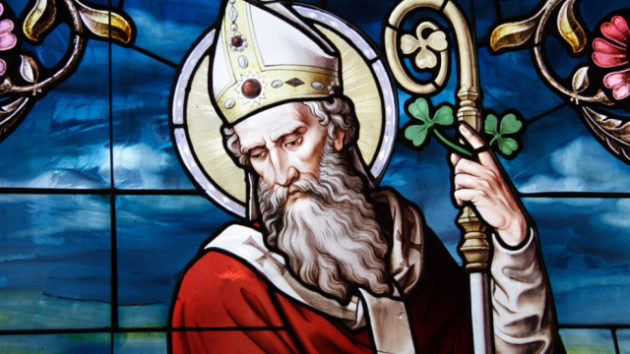Do you know the truth about Saint Patrick?
The following historical description of the life and times of St. Patrick is provided by the Billy Graham Evangelistic Association:
Poor Patrick. Over the centuries, this devout man became forever associated with guzzling green beer and banishing snakes from Ireland. Few party goers know or care about his Christian legacy. But even among some believers, Patrick earns little respect.
The truth about his life – what can be traced – is much more interesting. So, sit back, put aside your preconceptions, and take a little digital tour of all things “Patrick.”
First off, most sources note that Patrick was not born in Ireland but either in Wales or Scotland, the son of a Roman-British army officer during the decline of the Roman Empire. According to one school of opinion, he was born about 390 A.D., while the other school says it is about 373 A.D. His real name was probably Maewyn Succat. Though Patricius was his Roman name, he later came to be known as Patrick.
At 16, Patrick was taken prisoner by a group of Irish raiders who were attacking his family’s estate. They transported him to Ireland where he spent six years in captivity. It was there that the young man began to seek God.
In a 2006 Breakpoint commentary, Chuck Colson, the late chairman of Prison Fellowship Ministries, picked up the story: “Patrick had been raised in a Christian home, but he didn’t really believe in God. But now—hungry, lonely, frightened, and bitterly cold—Patrick began seeking out a relationship with his heavenly Father.
“As he wrote in his Confessions, ‘I would pray constantly during the daylight hours’ and ‘the love of God surrounded me more and more.’ Six years after his capture, God spoke to Patrick in a dream, saying, ‘Your hungers are rewarded. You are going home. Look—your ship is ready.’”
According to the History Channel website, “Patrick then walked nearly 200 miles from County Mayo, where it is believed he was held, to the Irish coast. After escaping to Britain, Patrick reported that he experienced a second revelation — an angel in a dream tells him to return to Ireland as a missionary.”
Soon after, Patrick began religious training, a course of study that lasted more than 15 years. After his ordination as a priest, he returned to Ireland to spread the Gospel to pagans and Druids who were still practicing human sacrifice and slavery.
William J. Federer, an author and historian, writes: “Wherever he went, Patrick left ministers. He founded 300 churches, baptizing over 120,000 converts. It was said that Patrick found Ireland heathen and left it Christian, resulting in Irish missionaries re-evangelizing Europe in later centuries.”
Chuck Colson added, “Irish monks considered it part of their Christian duty to copy all books in danger of being lost as the Roman Empire crumbled. Everywhere they went, they carried on their tradition of copying and preserving the Bible and every other book they could get their hands on.”
Rooted in Scripture
In a web article, Irish Church Missions (ICM), an Anglican Evangelical mission agency working in Ireland since 1849, showed how much Scripture meant to Patrick personally: “Nobody can read the works of Patrick and fail to notice how deeply his mind was immersed in the teaching of Scripture. He was a man of the Bible and knew his Bible.”
Especially important to Patrick were the words of the prophet Hosea, Those who are not my people I will call my people, and those not beloved I will call my beloved, and in the very place it was said to them, You are not My People, they will be called Sons of God.
“It is estimated that his works include about 180 quotations from the Bible,” says ICM. “This is not surprising since his ‘Confession’ was not about confessing his sins, but about the Gospel message he preached.
Patrick’s message centered on Jesus Christ, crucified, risen and ascended, reigning as Lord over heaven and earth. This, he determined to preach throughout Ireland, so that “…through me many people would be reborn in God.”
According to ICM, “Denominational claims on Patrick mean little when what is important is that the man be seen for what he was — a pattern Christian whose life and work should be a persuasion on Christians everywhere to be as he was in his commitment and witness to Christ and in his service for people. If that thought is not lost in the festivities of St. Patrick’s Day, there is gain for those who participate in them.”
Oh, and about those snakes? Because they were a symbol for paganism in Ireland, Patrick really did “banish” snakes in a figurative way. Literally, however, Patrick gets too much credit. According to Smithsonian.com and National Geographic, the emerald isle’s climate and geography are too hostile for snakes.


